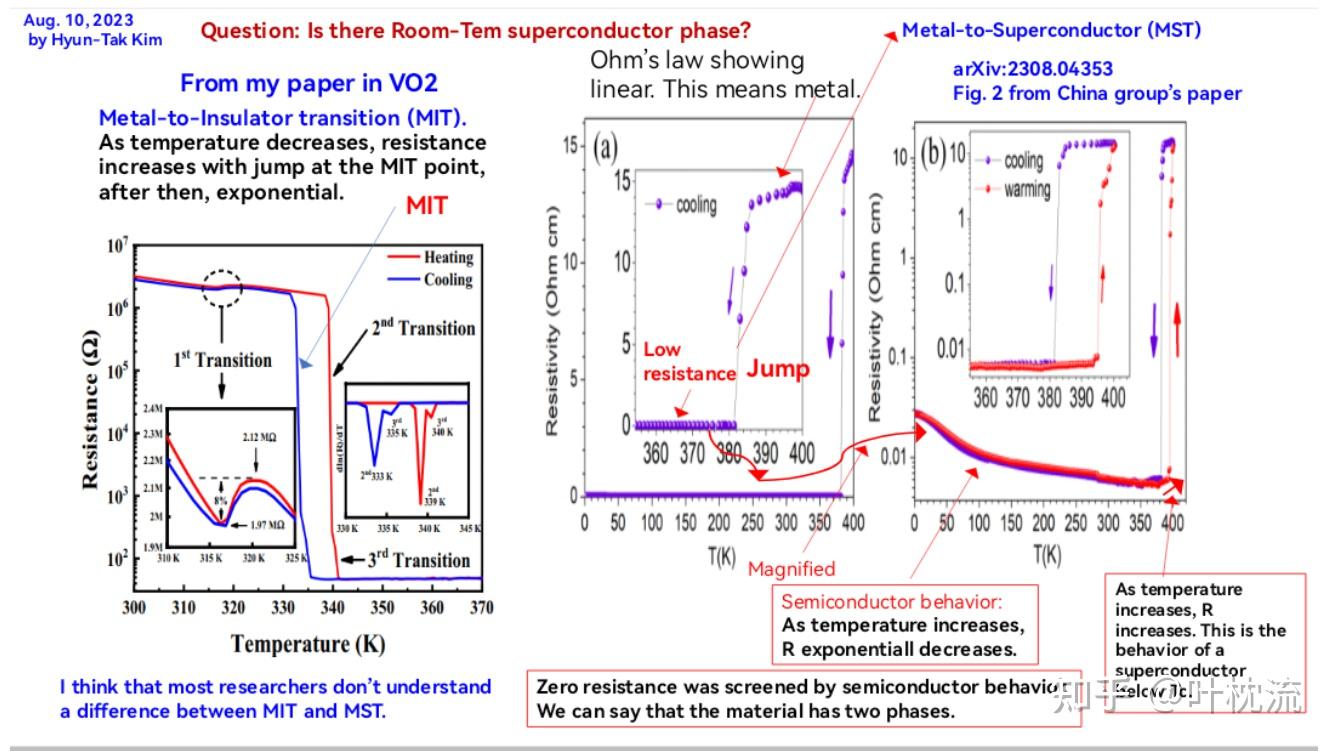Two updates on LK99. The Indian scientist who got LK99 sample replication on his third try says that his new sample is not superconducting. One of the original LK99 team responded with the description of two phases of LK99 (semiconductor and superconductor).
New Facebook Posting from Indian Scientist Awana VPS – LK99 CSIR-NPL (INDIA) LK-99 sample standing vertically locked with the permanent magnet!!.. …. “Complex Magnetism but NOT superconducting!!!… LK99 is a new Challenge to condensed Matter Physicists!!.. Thanks, LK you put many on task…”
Bad news from VPS Awana regarding his LK-99 replication sample: He updated his facebook post to indicate that his sample is not superconducting. Says his LK99 sample has "Complex magnetism but not superconducting". RIP https://t.co/vXwoyoq4Af pic.twitter.com/C4TaUHqhER
— Floates0x (@floates0x) August 11, 2023
Response from Korean Team
The response from Professor Jin Xuanzhuo with slides from the LK team:
Hyun Tak Kim quoted his own paper on VO2 to explain that most researchers did not understand the difference between MIT and MST (MIT, metal to insulator transition: after cooling down, the resistivity jump → becomes very large; MST, transition from metal to superconductor: resistivity jump after cooling down → becomes very small).

The RT chart of the paper of the Institute of Physics, Chinese Academy of Sciences, targeted marking was carried out. After using Ohm’s law to mark the metal phase part, he believes that there are two phases in the sample at low temperature: semiconductor phase and superconductor phase. The article of the Institute of Physics did not make a careful distinction. The zero resistance curve of superconductivity was not observed because the semiconductor phase was not removed. Shielding effects on resistance curves. He says the room temperature superconductivity actually exists in the resistance test results of the Institute of Physics.



Brian Wang is a Futurist Thought Leader and a popular Science blogger with 1 million readers per month. His blog Nextbigfuture.com is ranked #1 Science News Blog. It covers many disruptive technology and trends including Space, Robotics, Artificial Intelligence, Medicine, Anti-aging Biotechnology, and Nanotechnology.
Known for identifying cutting edge technologies, he is currently a Co-Founder of a startup and fundraiser for high potential early-stage companies. He is the Head of Research for Allocations for deep technology investments and an Angel Investor at Space Angels.
A frequent speaker at corporations, he has been a TEDx speaker, a Singularity University speaker and guest at numerous interviews for radio and podcasts. He is open to public speaking and advising engagements.


Thank you, Brian, for being active as a provider of LK-99 news. Your articles are getting to be just like my morning coffee. Can’t do without.
I think you are incoorrect.
Based on the theoretical DFT analyses, the semiconducting phase is expected where the Cu is in the wrong crystallographic positions, which are energetically more favorable.
I’ve already said before that even in a single crystal there could be a mix of the cooper in both the correct and the wrong positions.
@michaelk Sorry I see you used the version of copper with more oxygen than potassium (cooper vs copper)